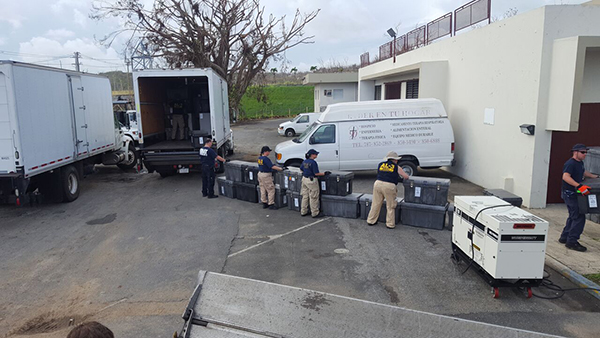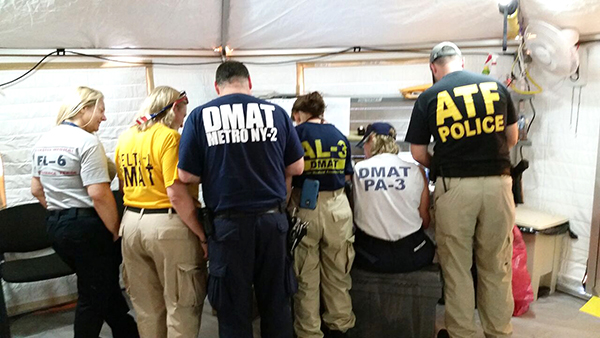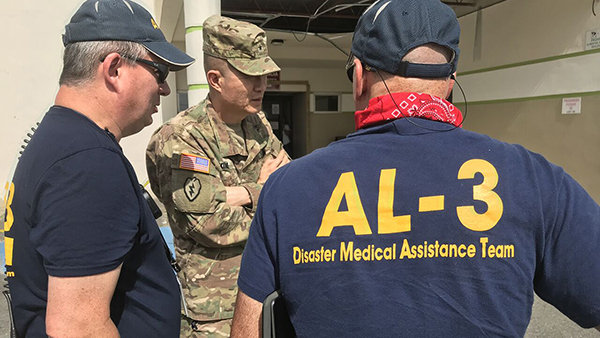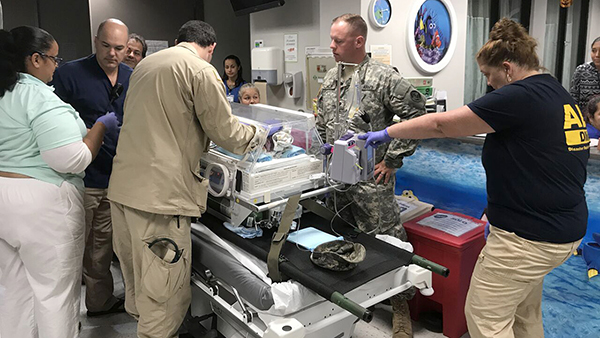On September 27, a team of Gulf Coast medical personnel deployed to Puerto Rico as members of the National Disaster Medical System’s (NDMS) Disaster Medical Assistance Team (DMAT). Although DMATs typically deploy for 14 days, the Alabama 3 DMAT stayed in Puerto Rico for 20 days and carried out a half dozen missions. The extended deployment saved many lives and forever changed the lives of those who received the care and those providing it.
Upon arrival, DMAT AL 3 was assigned to Ryder Memorial Hospital in Humacao, Puerto Rico. Their task was to set up a temporary medical site outside the hospital to help augment the facility’s services. Within days, the hospital’s backup generator malfunctioned and stopped working.

Thinking quickly, the DMAT members and hospital staff developed a plan to evacuate 32 patients being treated in the hospital, including one ventilator-dependent patient, three patients from the intensive care unit, 10 patients recovering from surgery, and 18 patients suffering from various illnesses and injuries.

According to Paul Randy Smith, commander for the DMAT, the evacuation involved two military helicopters to transport the ventilator patient and ICU patients to USNS Comfort, a military hospital ship circulating the perimeter of Puerto Rico to support U.S. disaster relief operations on the island and the U.S. Virgin Islands.
The remaining patients were evacuated by ground ambulance provided by the Department of Defense (DOD) or local private ambulance companies. Smith and his team worked quickly with Centro Medico in San Juan and HIMA Hospital in Caguas to determine which patients should be sent where. Decisions where based on the needs of each patient and the receiving hospital’s capabilities and patient load.

Thanks to the knowledge and experience gained through their local, state, and regional disaster training exercises, the DMAT successfully evacuated 29 of the 32 patients within a few hours. (The remaining three patients were treated onsite and did not need to be transported; they were later released.)
Ryder Memorial Hospital was just one of the DMAT’s missions. The team – which included physicians, nurses, paramedics, pharmacists, safety specialist, and other administration specialists primarily from Alabama – was assigned two joint missions with Urban and Search Rescue to locate, triage, and treat patients from Utuado, one of many remote mountainous areas that are in dire straits due to destroyed housing, disrupted utilities and a wretched electrical system. (For more information about these missions, read “From Cut-Off to Connected: HHS and the U.S. Army Work together to protect health in Utuado, Puerto Rico following a landslide”).

The team also worked with DOD to treat and transport more than 10 patients, including the first neonatal transport.

Prior to the loss of the hospital’s generator, the DMAT worked with Ryder’s emergency department to treat critical patients, including two patients suffering from cardiac arrest, a gun shot victim, a stabbing victim and a local police officer who was injured by a chain saw.
On October 25, Ryder Memorial Hospital began operating at 100% thanks to a generator supplied by the Federal Emergency Management Agency. Prior to that time, the hospital was not able to admit any patients. Now they no longer need federal assistance to care for patients, and federal medical personnel have been assigned to other locations in Puerto Rico where help is still needed.

